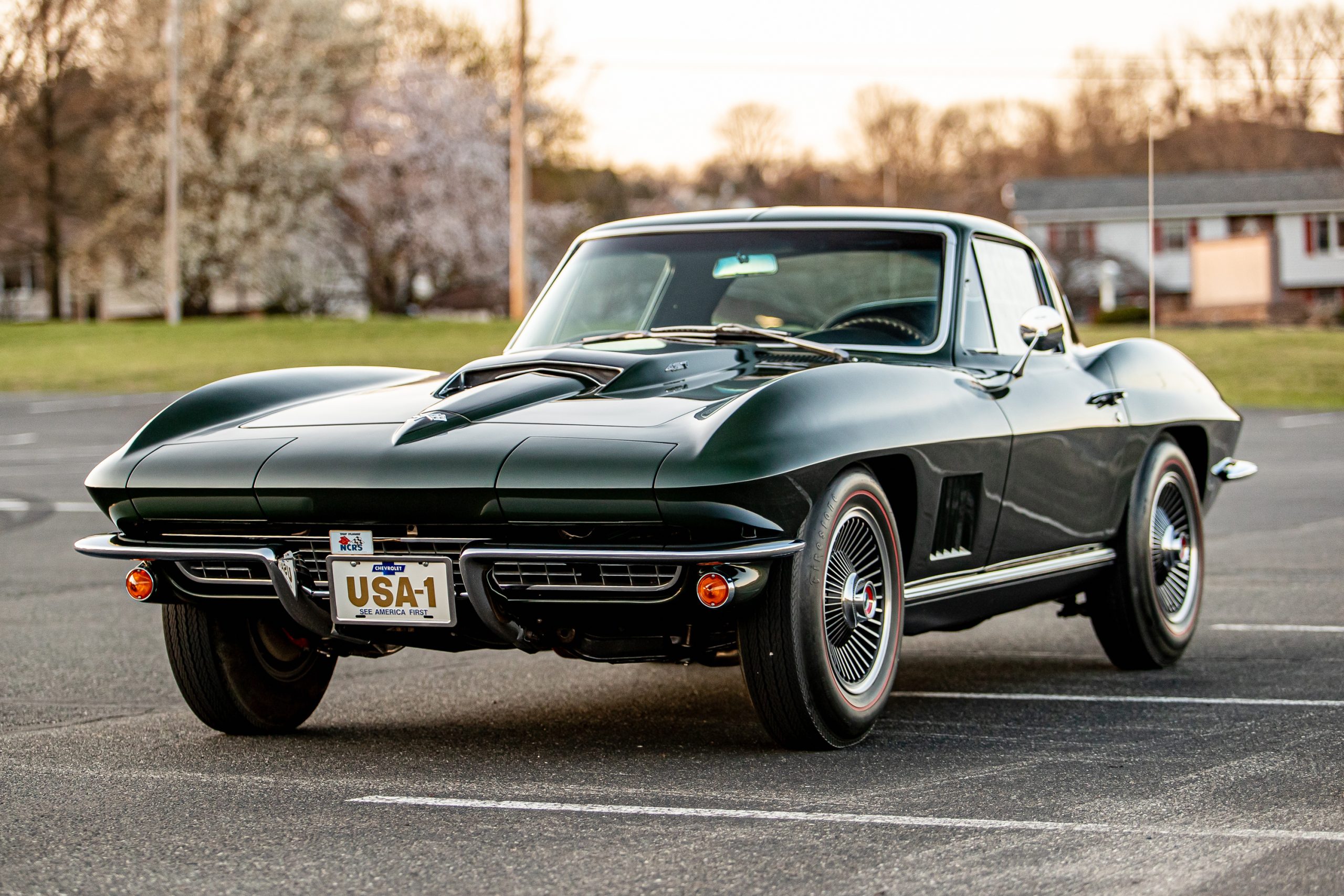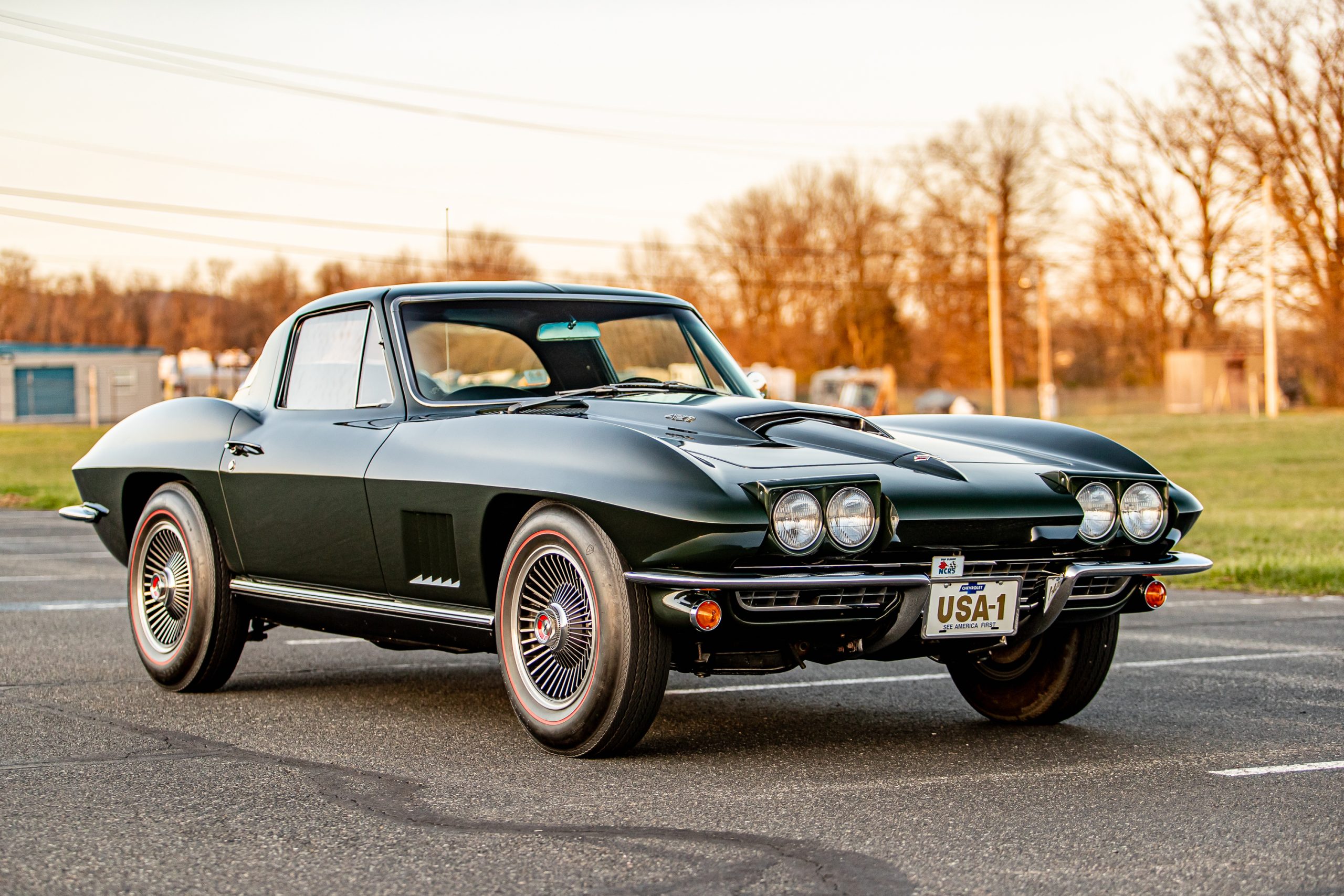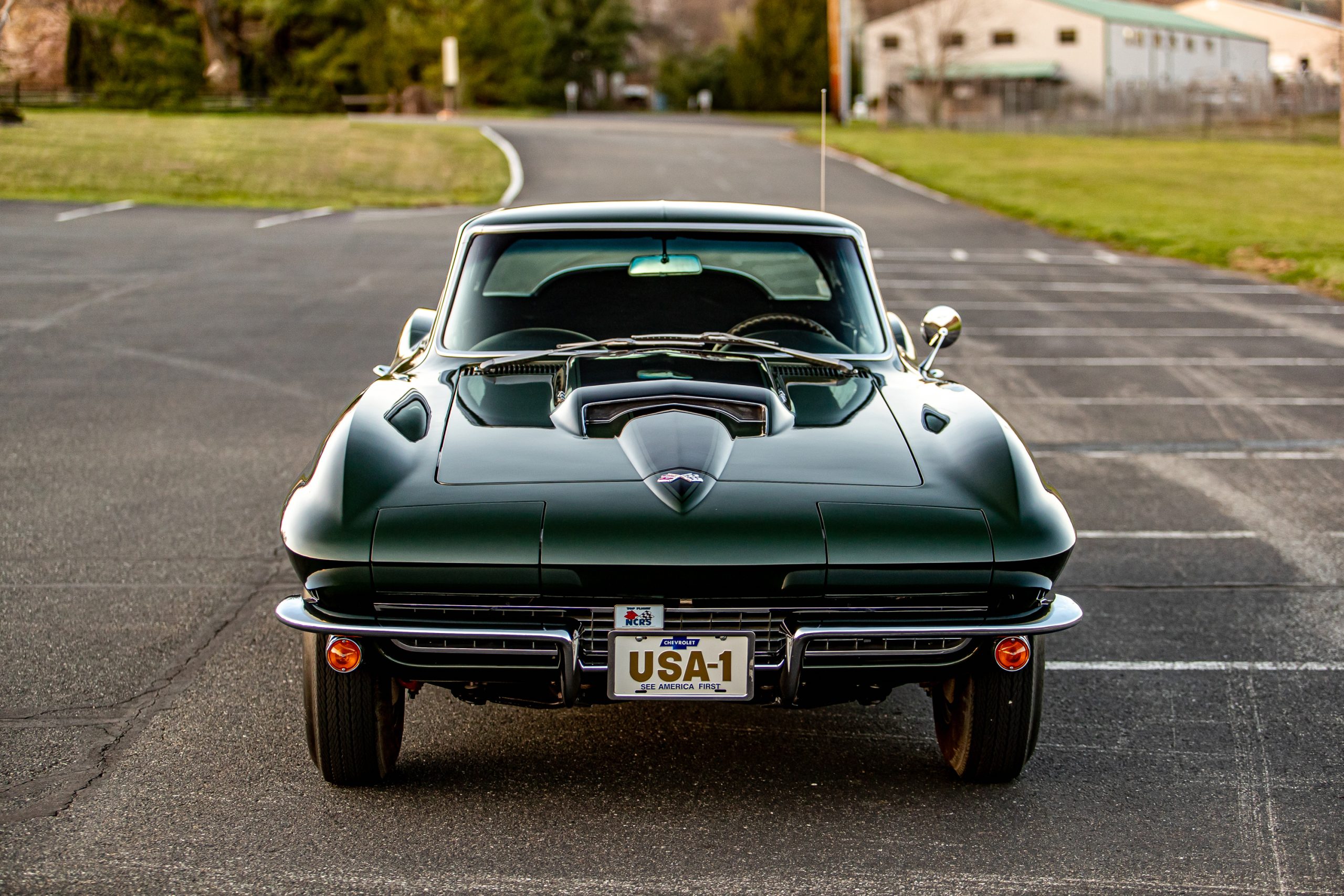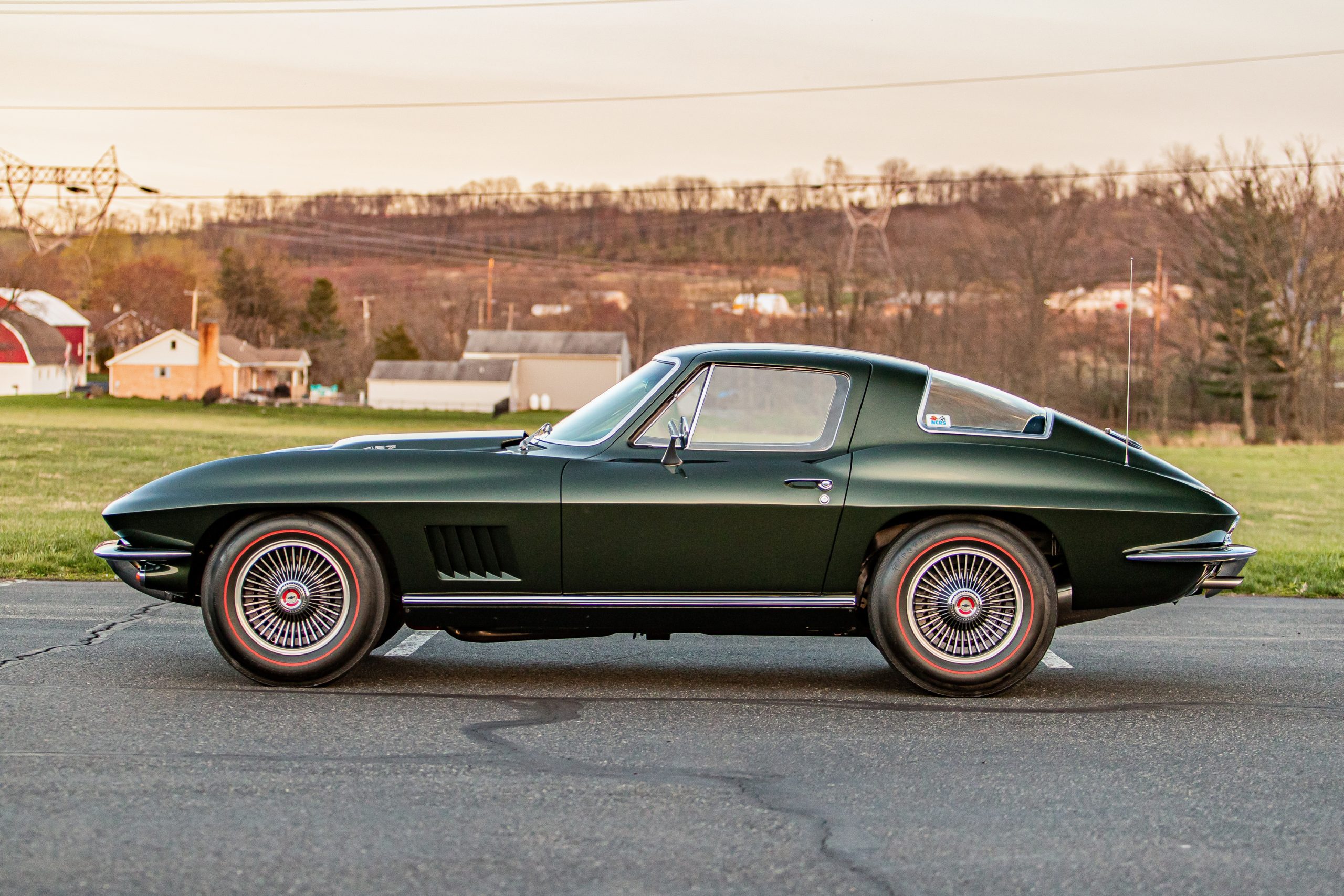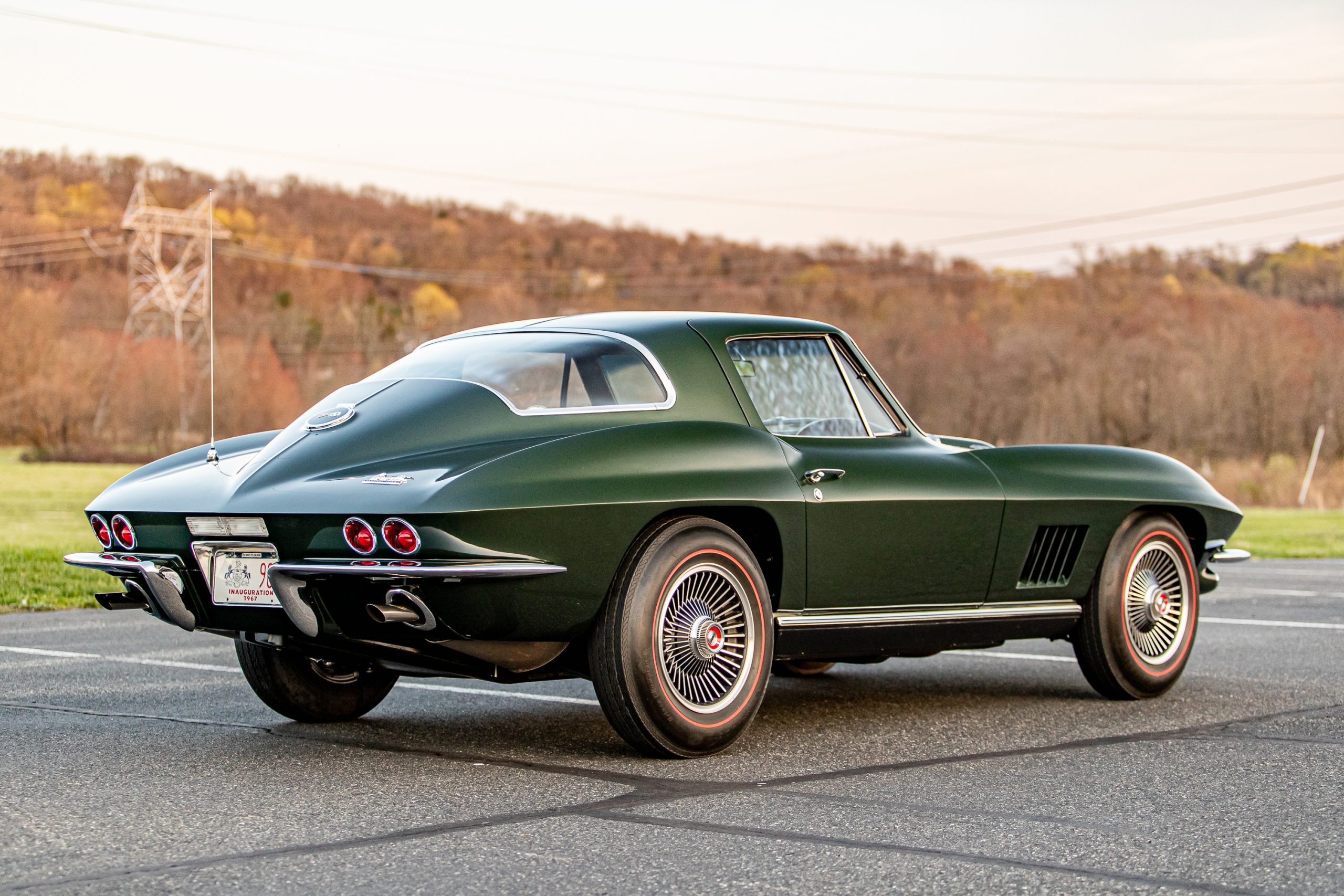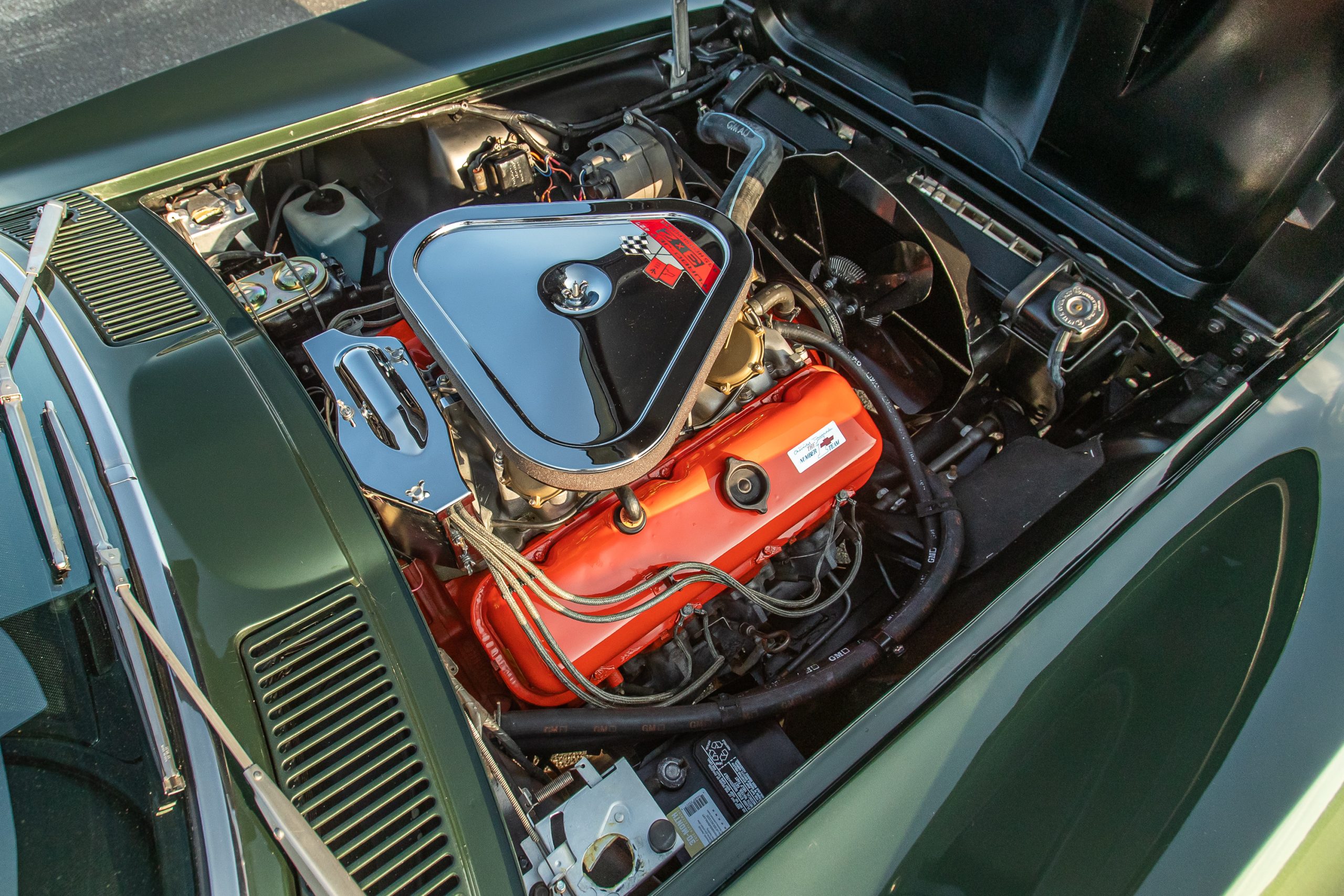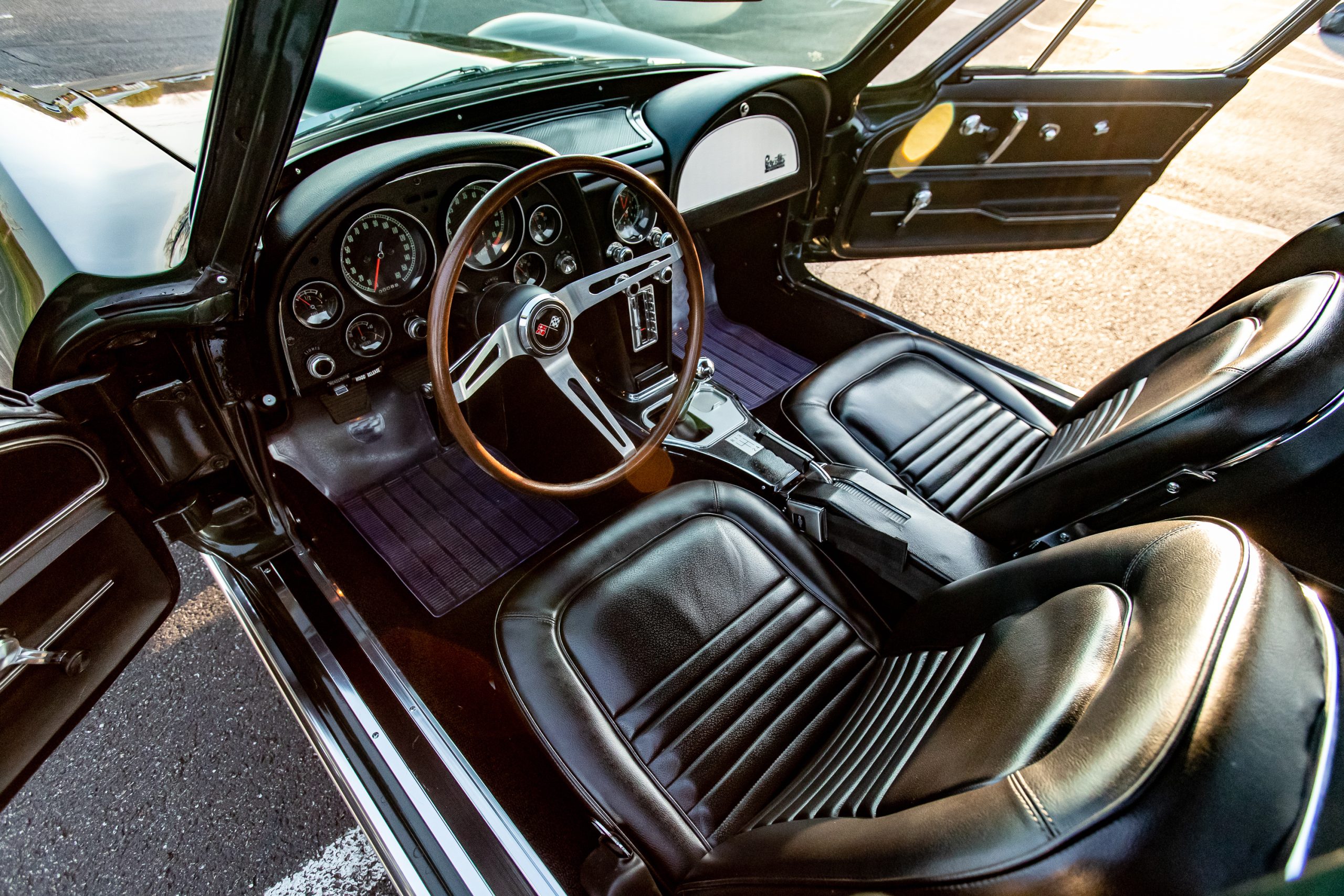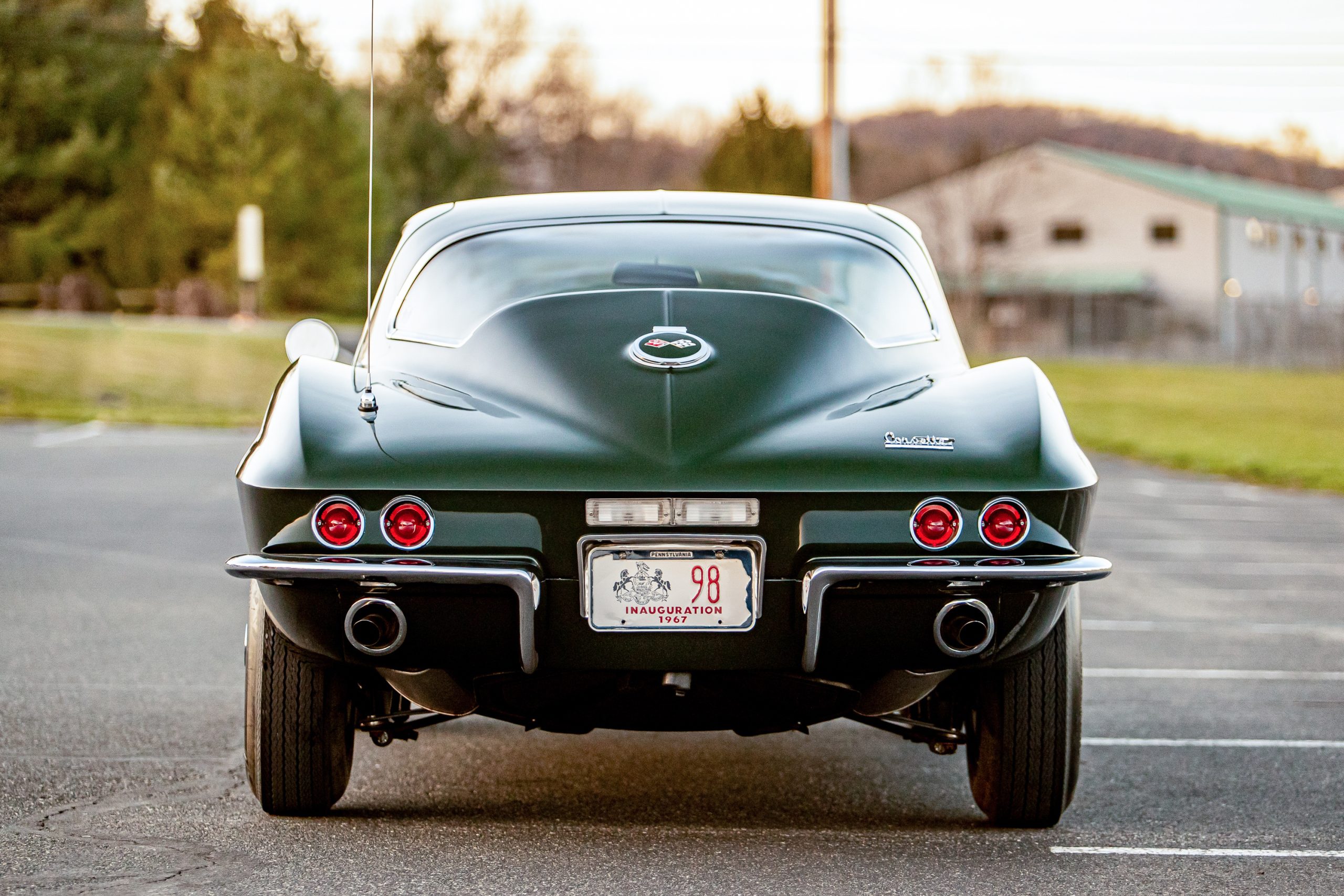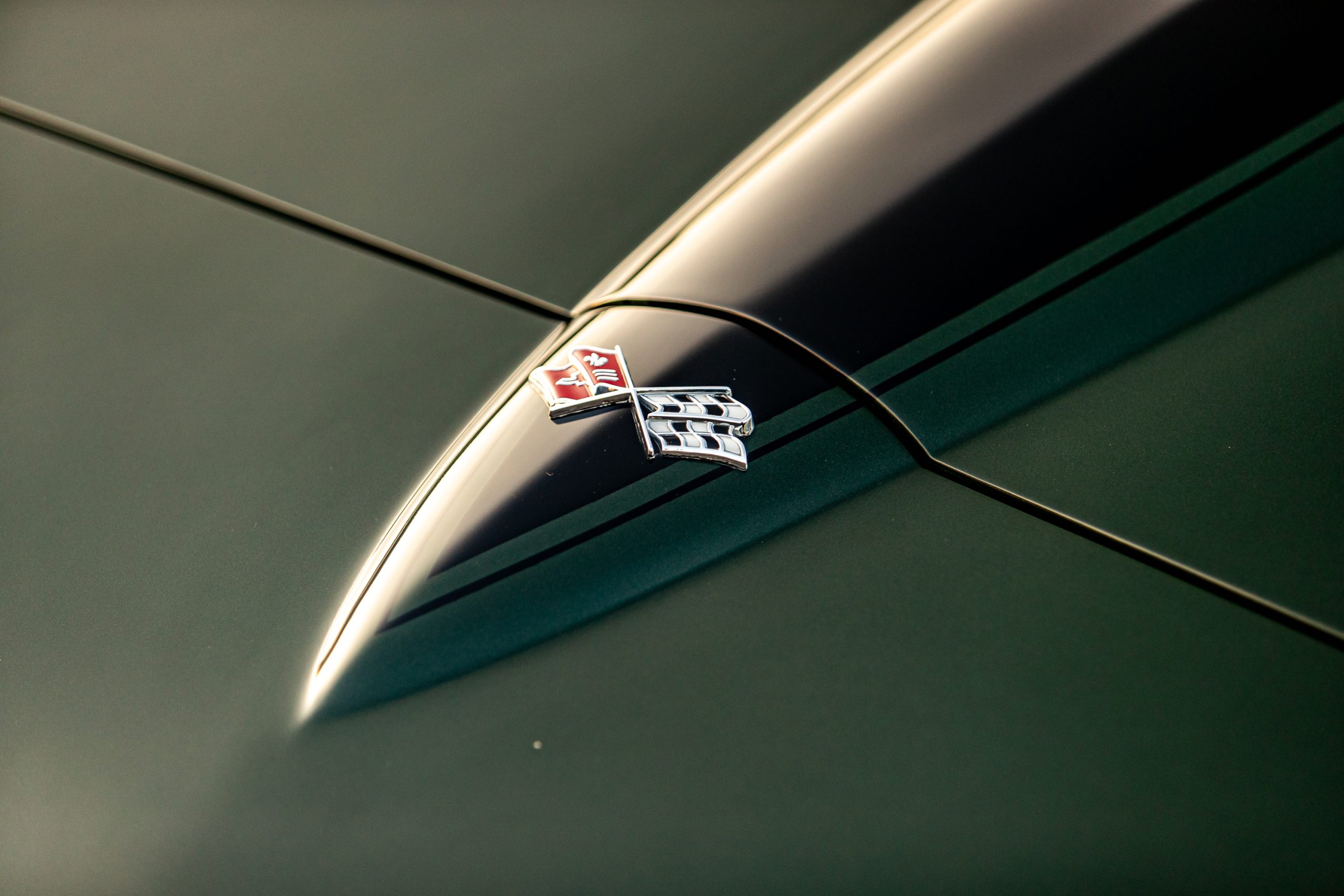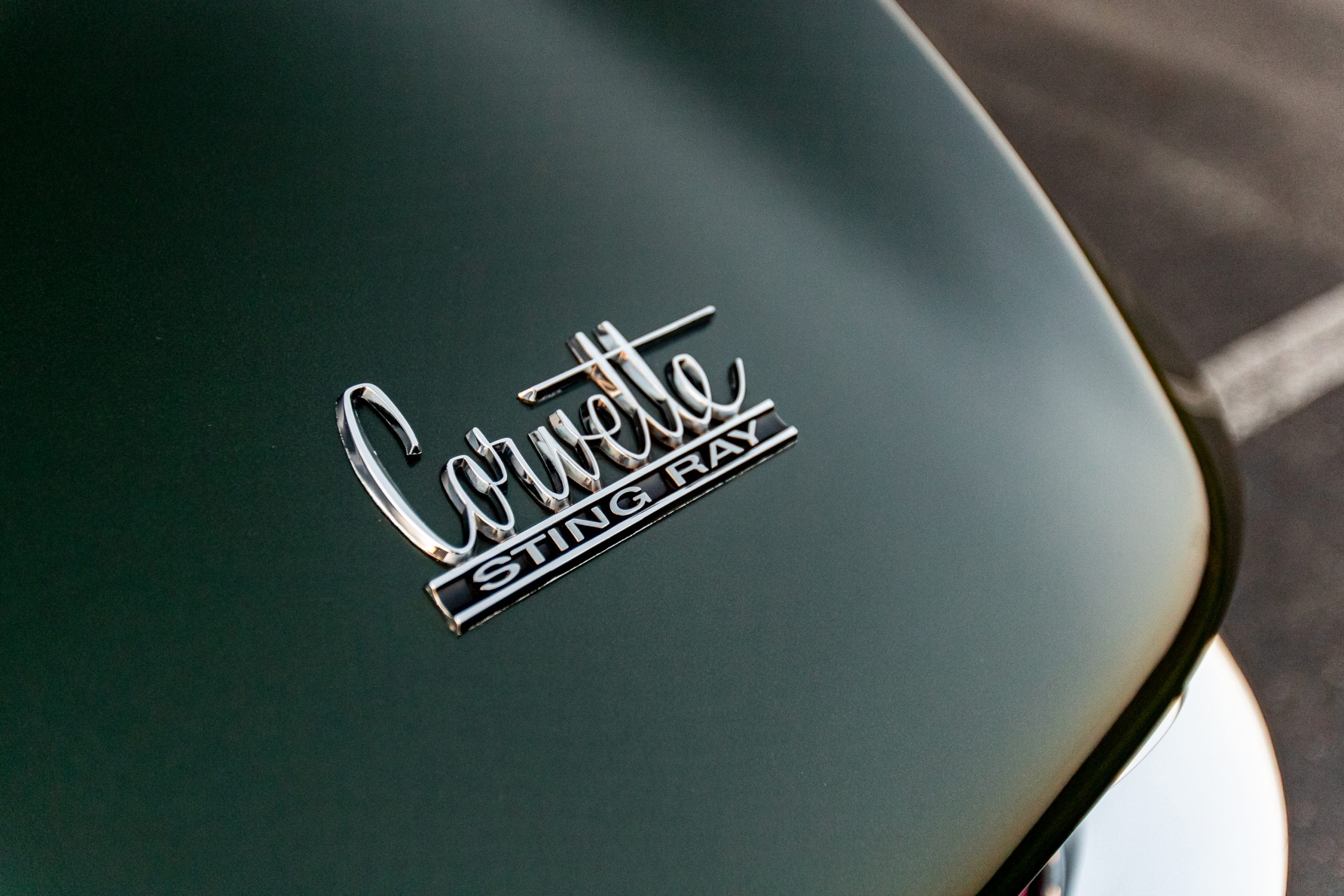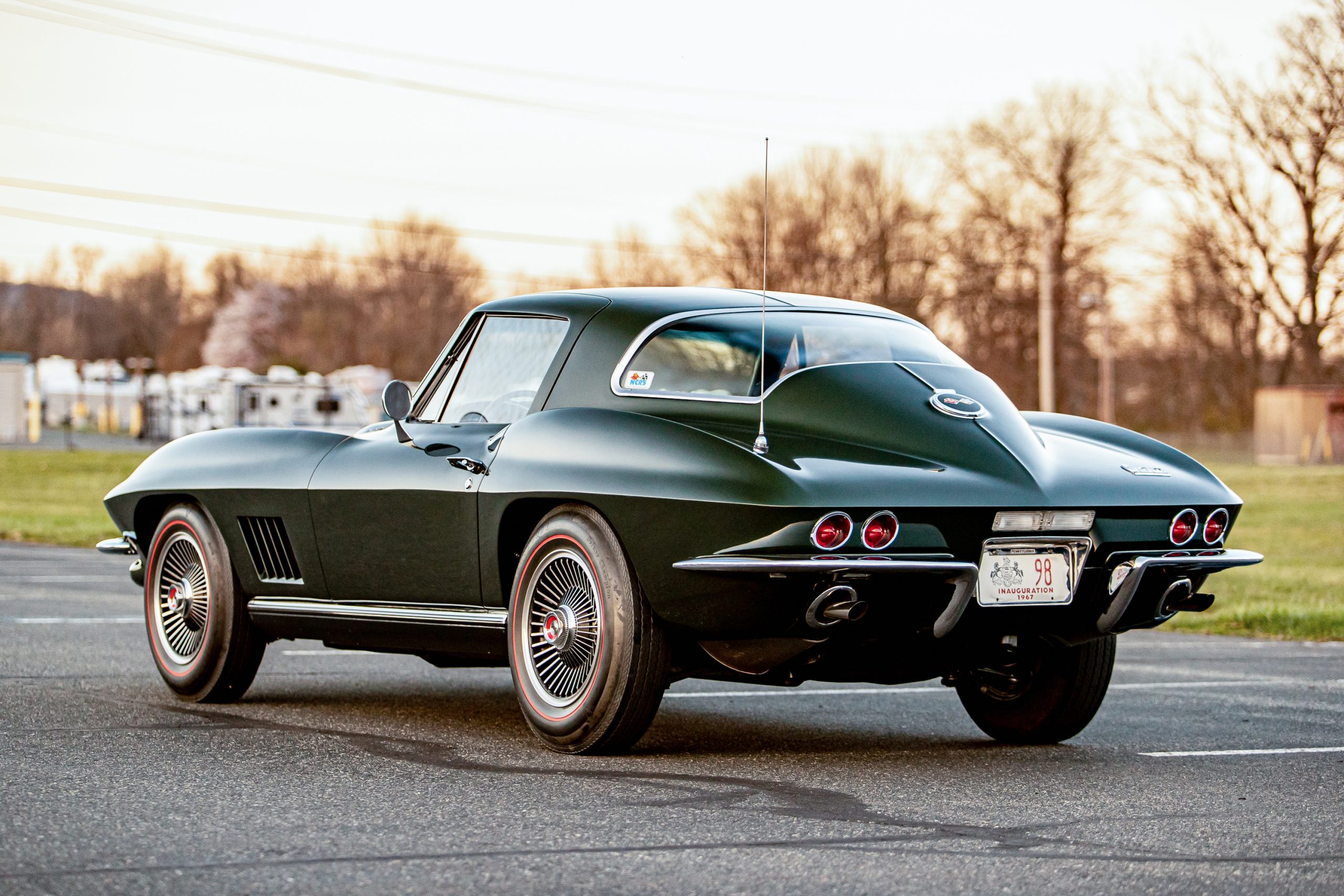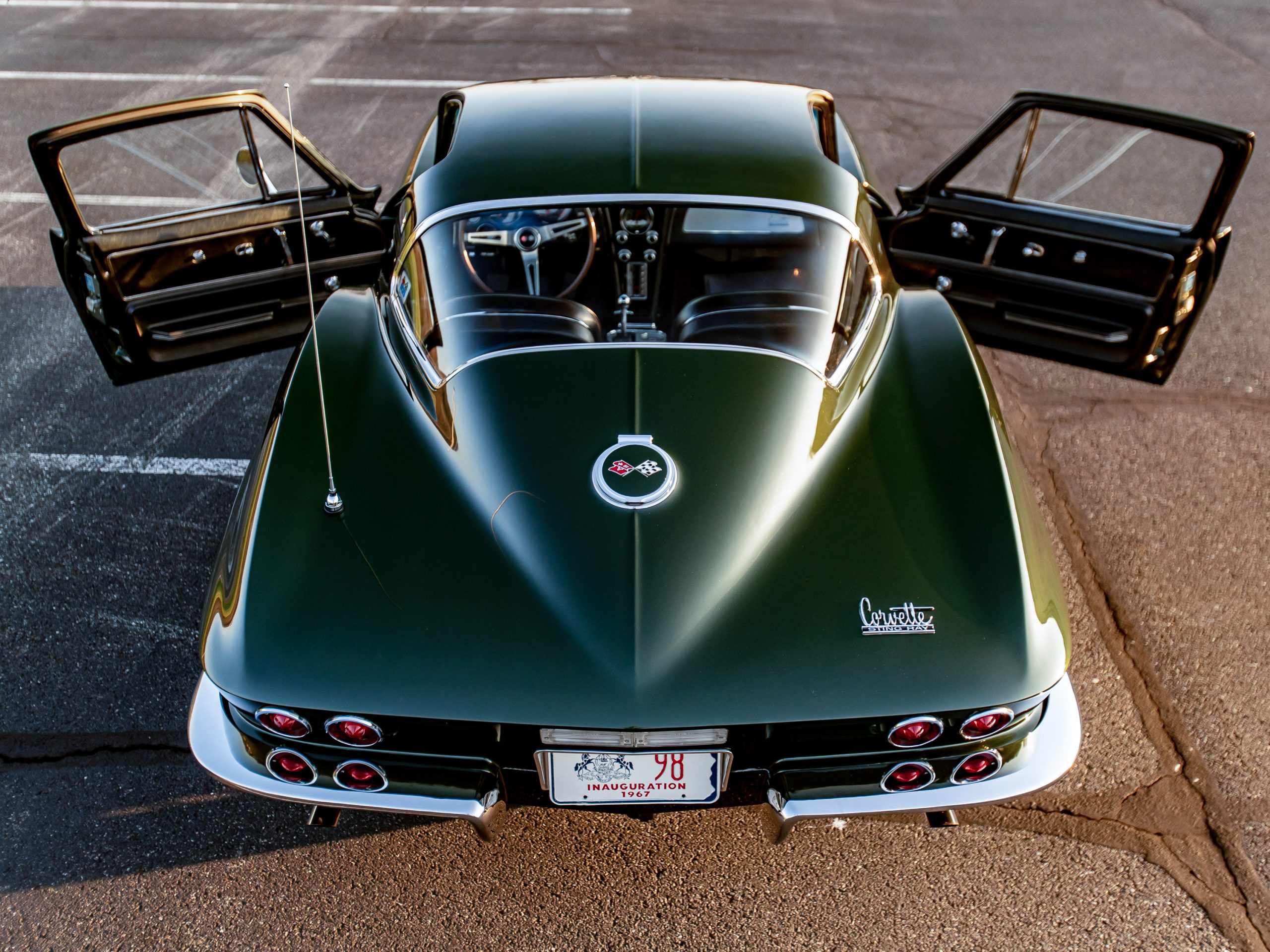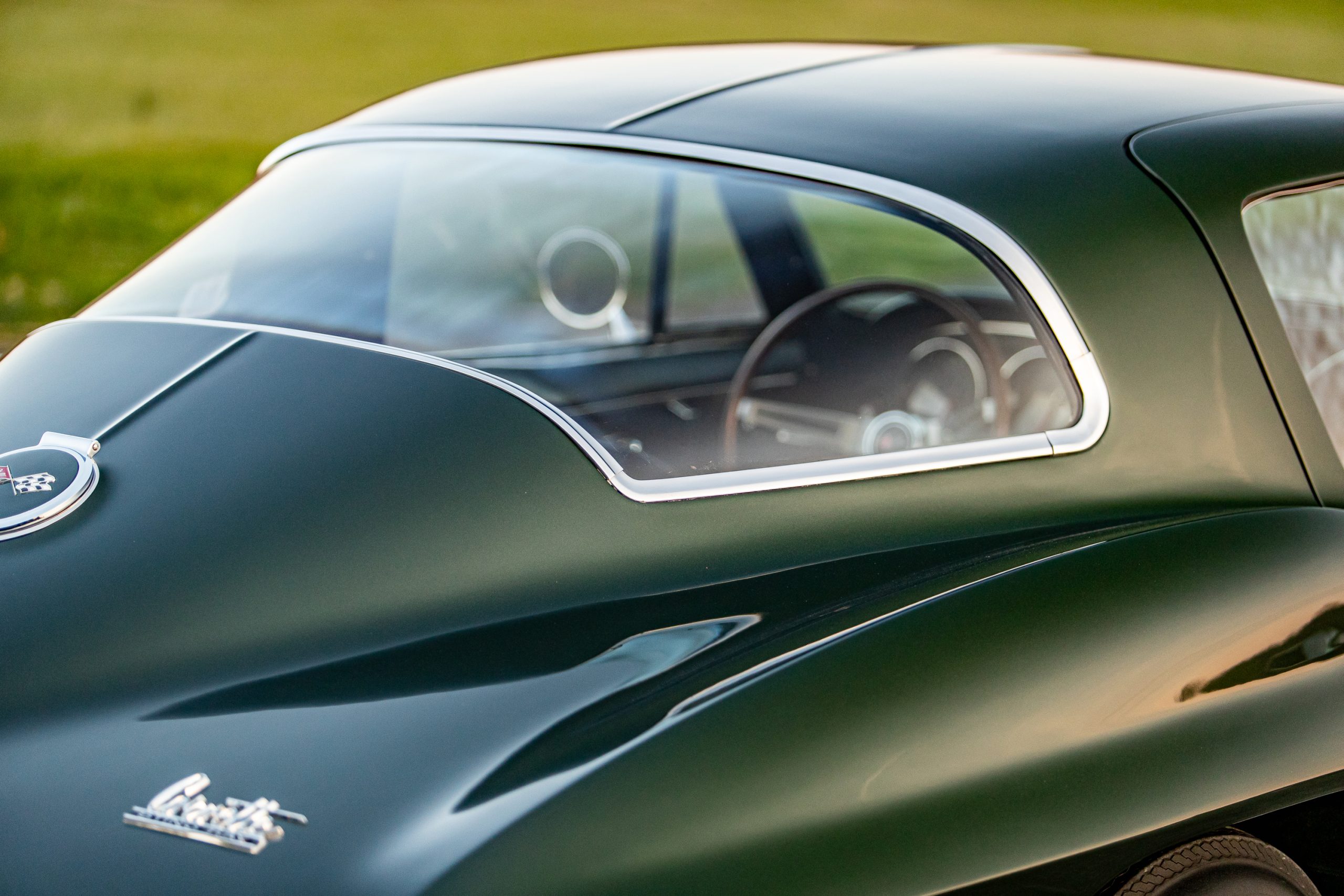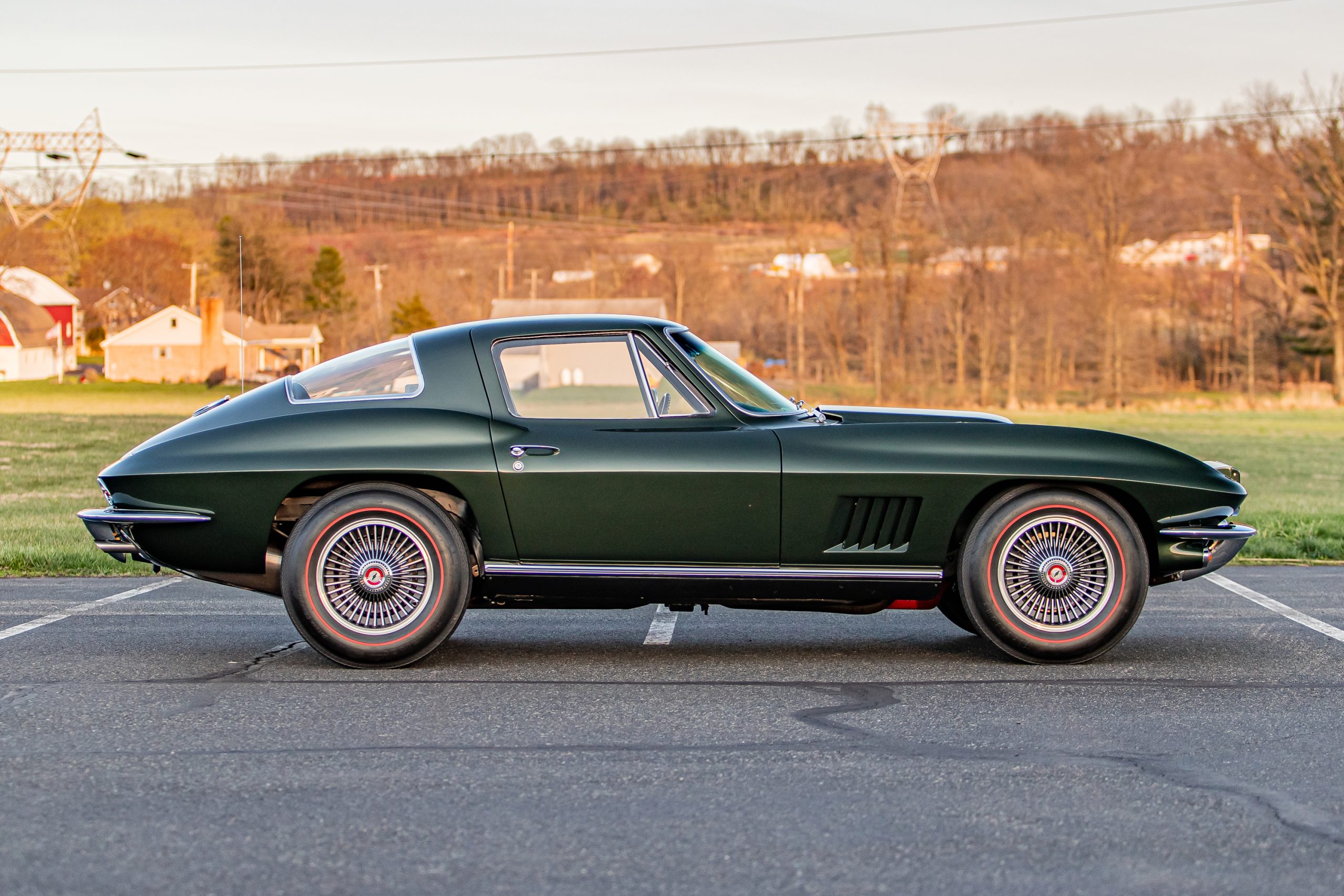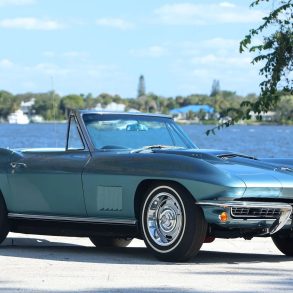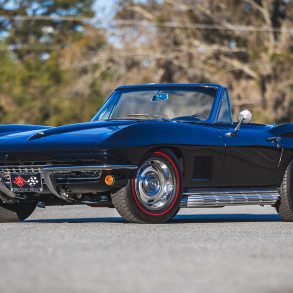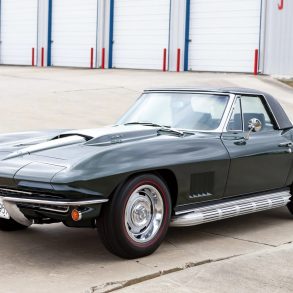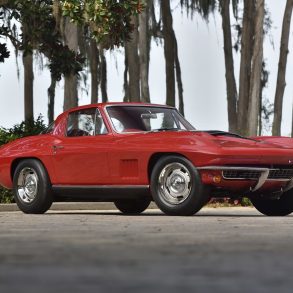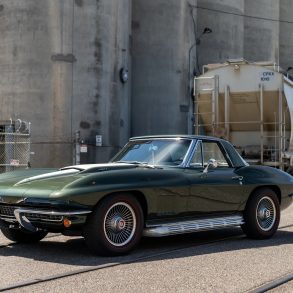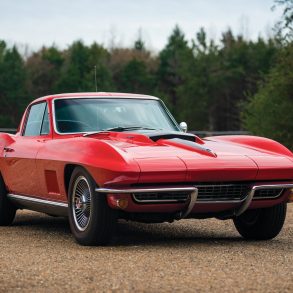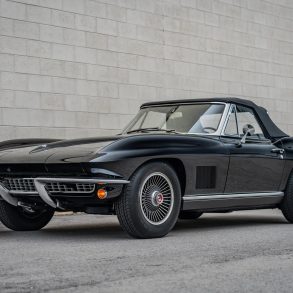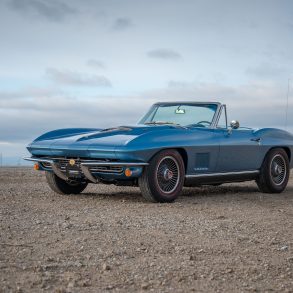The Sting Ray’s debut had a massive impact on the North American sports car market, with demand so high that even adding a second shift at the St. Louis factory couldn’t keep up. Styled under Bill Mitchell at General Motors’ Art and Colour Studio, the Corvette’s new design drew inspiration from Mitchell’s successful Stingray sports-racer.
This generation introduced the Gran Turismo Coupe for the first time. The Sting Ray featured a new ladder-frame chassis with independent rear suspension, which lowered the center of gravity and improved handling and ride quality.
Similar to the 1956-62 Corvettes, development was marked by gradual annual facelifts and few major engineering changes. The most notable update came in 1965 with the introduction of four-wheel disc brakes. The standard engine was Chevrolet’s 327ci (5.4-liter) 250bhp V8, with an optional 396ci (6.5-liter) Big Block available in 1965, replaced by the ‘427’ until production ended in 1967.
The 1963-1967 Sting Ray period is now viewed as a ‘golden age’ for the Corvette and is highly collectible. In 1967, the Corvette’s styling became sleeker, with many considering it the best-looking of the first-generation Sting Rays. The most powerful regular production engine was the L-71, which produced 435 bhp with three Holley two-barrel carburetors and 11.0-to-1 compression.
Photo Source: RM Sotheby’s


